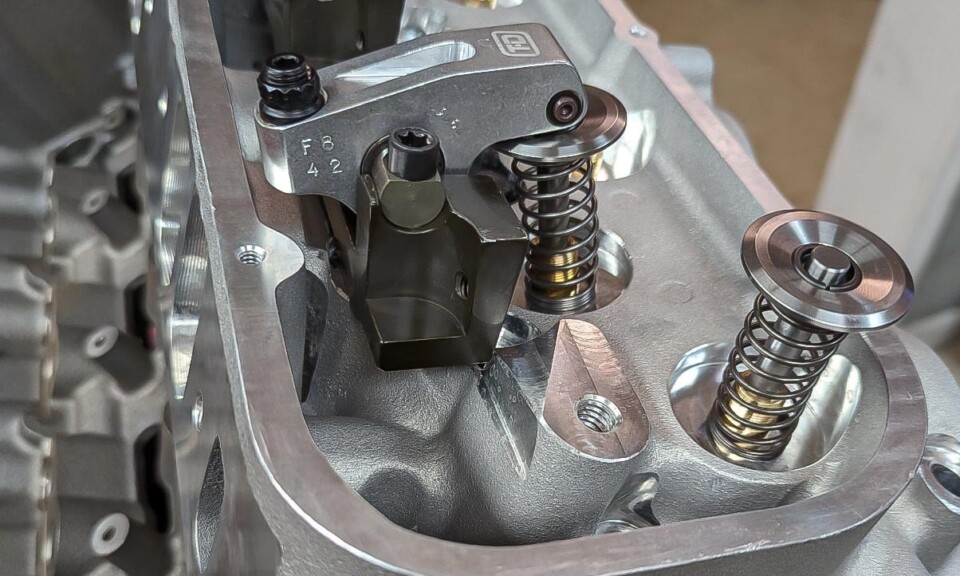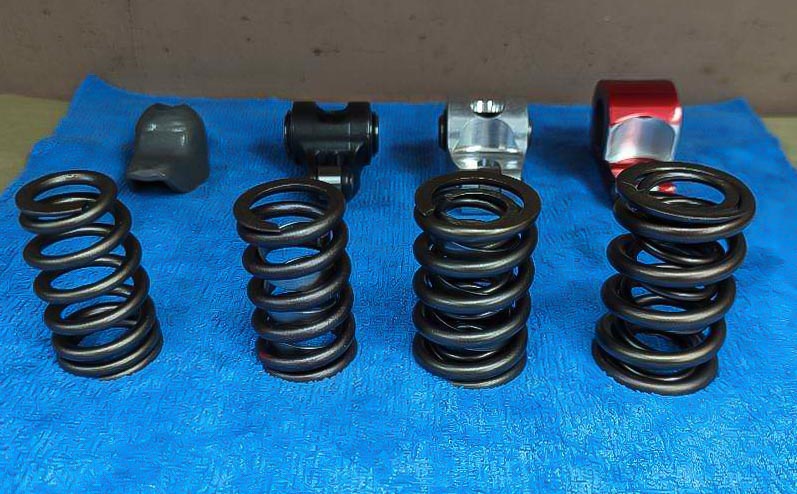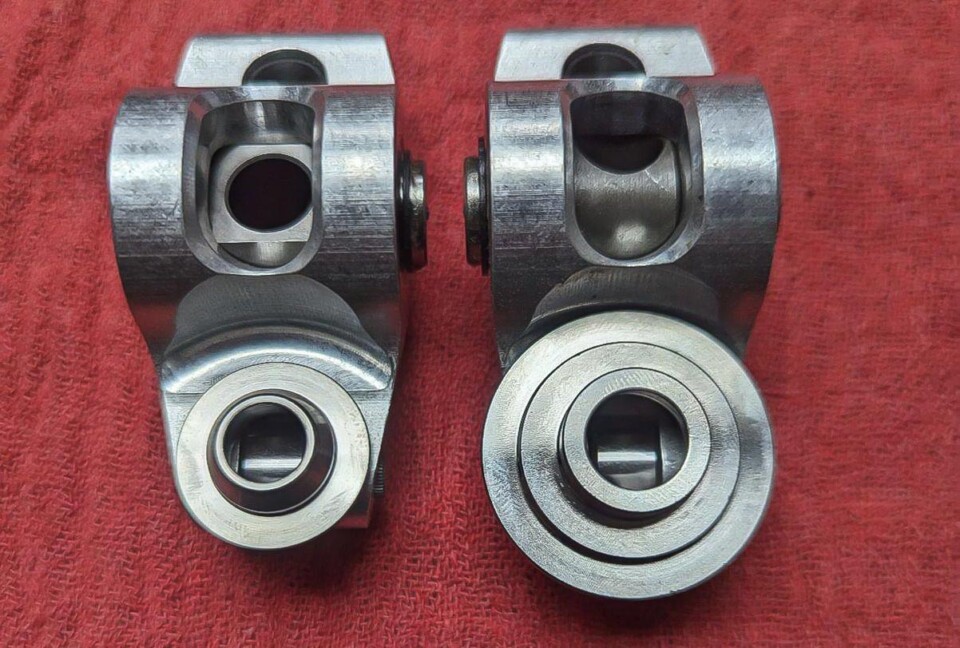There is an amazing amount of engineering that goes into the valvetrain operation of an internal combustion engine. The myriad of parts involved are all individually engineered to do a job and work in concert with the other components. Rocker-to-retainer clearance is an often overlooked subject within valvetrain setup, and giving it some thought and ensuring you that have enough can prevent premature wear and/or valvetrain failure.
When you step up from a beehive-style valve spring and retainer like the Erson 3250 on the left to something like the Erson Cams 508 Titanium retainer on the right, rocker-to-retainer clearance becomes ever-so-important. The 508 retainers are manufactured to fit up to a 1.630-inch spring.
“In most cases, you can’t have too much clearance,” explains World Products Director of Operations Lance Stillwell. “What most people don’t understand is that in the upper RPM range, the top of the valve is dancing around as much as the spring is. Any time you start having interference, you send harmonics through the valvetrain.”
The harmonics alone can prevent the valvetrain from operating as intended, but Stillwell also notes that insufficient clearance can cause the rocker arms to hit the spring retainers, which can grind away at the body of the rocker arms. The contact can also cause the springs to grind into the retainers, especially titanium ones.

Rocker-to-retainer clearance is best checked before an engine is ever fired, and using “checker” springs such as the ones pictured here not only allow the engine builder to verify the valvetrain geometry and piston-to-valve clearance, but also ensure that there is adequate clearance between the rocker arm body and the valve spring and/or retainer.
“Some high-end engine builders have told me that while doing an oil analysis at a molecular level they have found titanium from the retainers embedded into the cylinder walls,” Stillwell says. “This is usually caused by the spring cutting into the retainer.”

Here you can see a variety of rocker arms and valve springs. On the far left you have a stock stamped steel small-block Chevy rocker arm and stock-style, single-coil valve spring. Second from the left is a cast steel, high-performance rocker arm and beefier single-coil spring. Second from the right is a PBM 803-16 pedestal-mount aluminum rocker arm that is manufactured with plenty of clearance for the stout dual valve spring it must actuate. And on the far right is a…
Click Here to Read the Full Original Article at DragzineDragzine…

